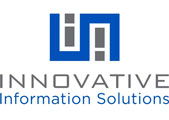Application delivery
While it's true that the network is responsible for connecting firewalls, managing physical and virtual servers, streamlining data storage, and making sure that data packets get through quickly, the real role of a network is in delivering applications that run a business. Without applications, there would be no need for all those other components. Application delivery networking is a suite of services and technologies that are deployed together to lower the cost of enterprise networks and increase productivity as well. This approach provides streamlined and optimized performance across the application layer, leading to higher availability for all users. And the more they can access and utilize the full functionality of applications, the more productive they'll be.Disaster recovery
Even a minor disruption can have a ripple effect across an organization, leading to lost productivity. That's why the disaster recovery components of an IT infrastructure are so crucial — not only for dealing with getting systems back up and running quickly, but also by working to prevent disruptions in the first place. There are numerous aspects at play with these components, including hardware, software, and professional services. They must be assessed on an individual company level, to understand what type of mix fits in best with an existing IT infrastructure. From there, resources and best practices can also be implemented, for a more robust strategy that keeps productivity on track.Endpoint management
In a network architecture, endpoints are whatever devices or equipment are used to access the corporate network. As mobile devices and Internet-enabled gadgets proliferate, endpoint management becomes increasingly vital for making sure that everyone on the network is operating at maximum efficiency and productivity. Deploying endpoint management solutions allows a company to support multiple types of devices, and reduce operational costs at the same time. It allows for security updates, intrusion detection, and even power management and remote functionality. With an IT infrastructure, these features — when managed correctly — can increase productivity by taking away end-user responsibility for tasks like updating software or setting access controls. As a result, a company is able to connect with clients, remote employees, and branch offices with ease.To ensure even higher levels of productivity, consider setting up a comprehensive IT evaluationthat can give you a high degree of visibility across all parts of your IT infrastructure, so you can make sure every component is keeping your company strong.
GET A COMPLIMENTARY ASSESSMENT
